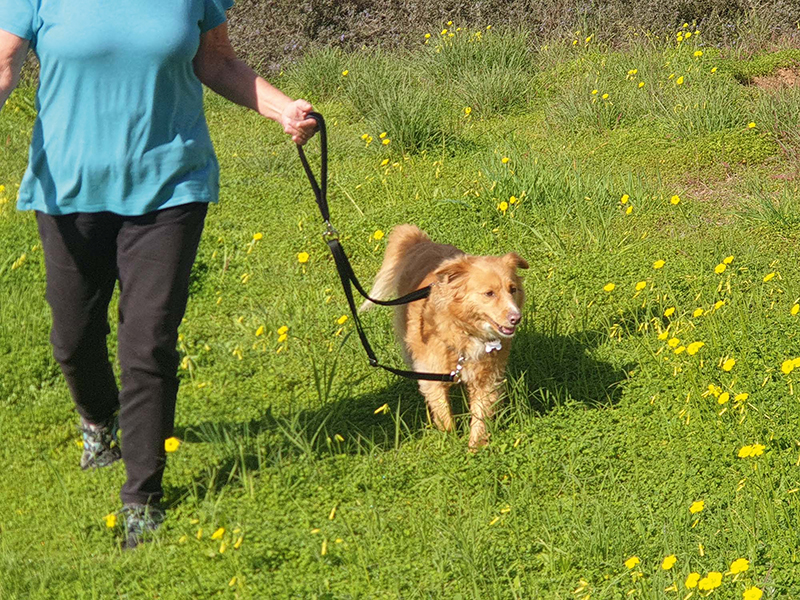Do collars put some dogs at risk of trachea injury? Does a harness encourage a dog to pull? Julie Hill discovers there is no simple answer!
Tellington TTouch practitioner and dog trainer Alex Wilson, co-founder of East Midlands-based Xtra Dog Training, is clear. “I would never put a dog in anything other than a harness, unless there is a really good medical reason not to,” he said. “I’ve looked into this, and the history of it, and I can see only one reason why we walk dogs in collars, and the simple answer is because we can.”
Alex points out that while we sometimes put safety reins on children, we would never restrain them around their necks. He also considers it a myth that harnesses cause dogs to pull, pointing out that although a sled dog harness encourages and allows a dog to lean forward, other designs don’t.

Trainer Alex Wilson is a great advocate for harnesses.
“I use, and teach my clients to use, a balancing TTouch harness to which a double-ended lead is attached in two places (on the back of the harness and on the front at the chest).
“If you take the hypothesis that posture influences behaviour, and physical balance will influence mental and emotional balance in a dog, having those two connection points can help the dog to be more physically balanced, and that will, in turn, influence or change the mental and emotional balance,” said Alex.
However, Samantha Goldberg, who is a vet, Beagle breeder, and Kennel Club breed health coordinator for the UK Beagle clubs, referenced research into the effect of harnesses. “They’ve studied dogs on a treadmill with pressure pads underneath, and they can actually see the differences between dogs wearing various types of collars and harnesses. Even in the non-pressure harnesses, dogs are less inclined to extend forward, so there is obviously either a discomfort or a restriction felt by the dogs that makes them feel unable to use their legs in a natural gait, which is a little bit worrying,” she said.
Samantha also noted that some fashion harnesses can be very restrictive.

Alex strongly recommends harnesses with two points of connection to help your dog’s balance.
While she had heard of dogs injuring themselves when left alone in a crate wearing a collar, she added: “It’s extremely rare to see a dog with a neck injury. I don’t think I have ever seen a dog with a direct collar injury, even though it’s quoted all the time.”
It may all depend on which activities you are doing with your dog, alongside his age, character, and breed, as to whether a collar or harness is best. However, wearing a collar — even if you don’t attach a lead to it — is a legal requirement under the Control of Dogs Order 1992.
“Just as choice needs careful consideration, so does introduction,” said a spokesperson for the RSPCA. “When first introducing a new piece of equipment, take your time to do it slowly and in a positive way. Your dog should not be forced to wear a collar or harness and they shouldn’t be afraid or worried about it either. You can teach your dog that their collar or harness means good things by showing them the piece of equipment and offering them a treat. Repeating this will quickly help them to learn that these are not scary.”
Read the rest of the feature in the May issue, available to read instantly on our digital edition HERE or purchase the print edition HERE.
------------------------------------------------------------------------------------------------------------------
Don’t miss an issue and subscribe! Become a Your Dog subscriber today and join thousands of dog owners getting helpful training tips and tricks, the latest advice, fantastic dog stories and more!
We have a brilliant trial offer on both print and digital of JUST 99p for your first issue!







